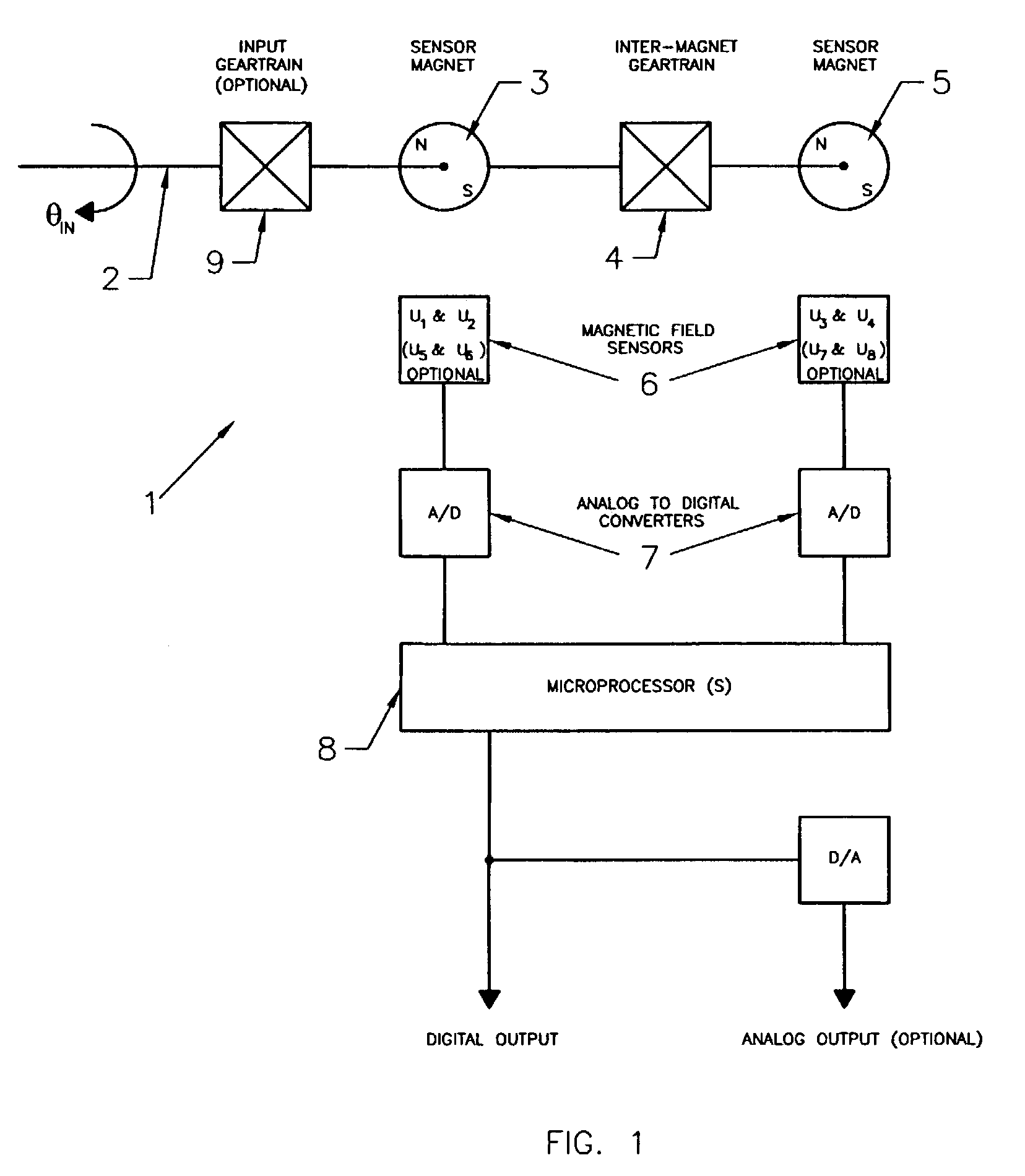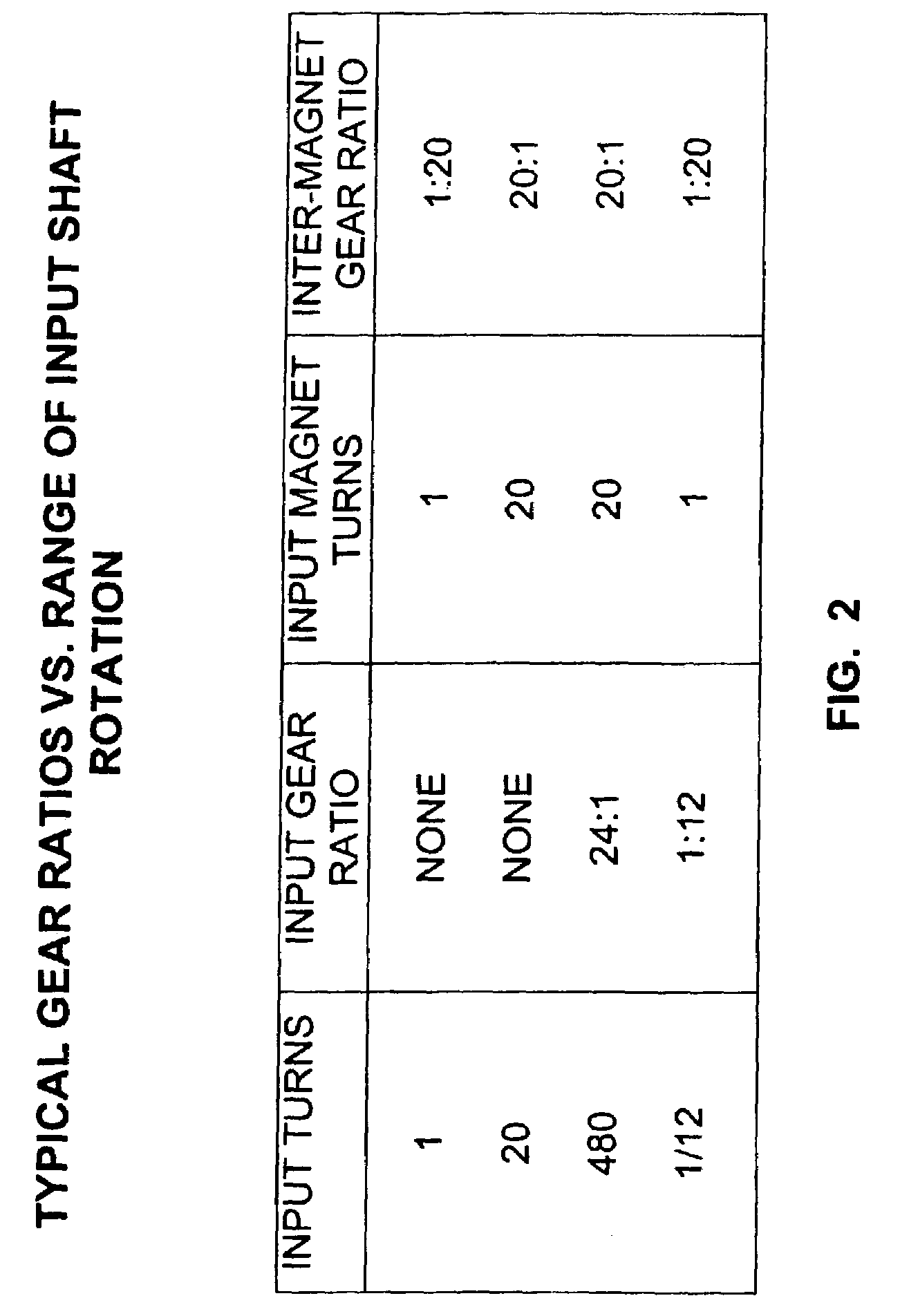Contactless angular position sensor and method for sensing angular position of a rotatable shaft
a technology of angular position sensor and rotatable shaft, which is applied in the direction of instruments, galvano-magnetic hall-effect devices, and using reradiation, can solve the problems of increasing complexity and cost, limiting the accuracy of hall-effect and magnetoresistive sensors, and providing inherent digital signals. to achieve the effect of improving the accuracy of sensing fractional rotation
- Summary
- Abstract
- Description
- Claims
- Application Information
AI Technical Summary
Benefits of technology
Problems solved by technology
Method used
Image
Examples
Embodiment Construction
[0033]For the purpose of promoting an understanding of the principles of the invention, reference will now be made to the embodiments illustrated in the drawings and specific language will be used to describe the same. It will nevertheless be understood that no limitation of the scope of the invention is thereby intended, such alterations and further modifications in the illustrated device, and such further applications of the principles of the invention as illustrated therein being contemplated as would normally occur to one skilled in the art to which the invention relates.
[0034]FIG. 1 is a block diagram representation of a shaft angle position sensor 1 in accordance with the present invention. The sensor includes a rotary input shaft 2 mounted for rotation through an angle designated as θIN, an input sensor magnet 3 connected for rotation responsive to rotation of the input shaft, an inter-magnet (interconnecting) gear train 4 having an input connected for rotation with the input...
PUM
 Login to View More
Login to View More Abstract
Description
Claims
Application Information
 Login to View More
Login to View More - R&D
- Intellectual Property
- Life Sciences
- Materials
- Tech Scout
- Unparalleled Data Quality
- Higher Quality Content
- 60% Fewer Hallucinations
Browse by: Latest US Patents, China's latest patents, Technical Efficacy Thesaurus, Application Domain, Technology Topic, Popular Technical Reports.
© 2025 PatSnap. All rights reserved.Legal|Privacy policy|Modern Slavery Act Transparency Statement|Sitemap|About US| Contact US: help@patsnap.com



